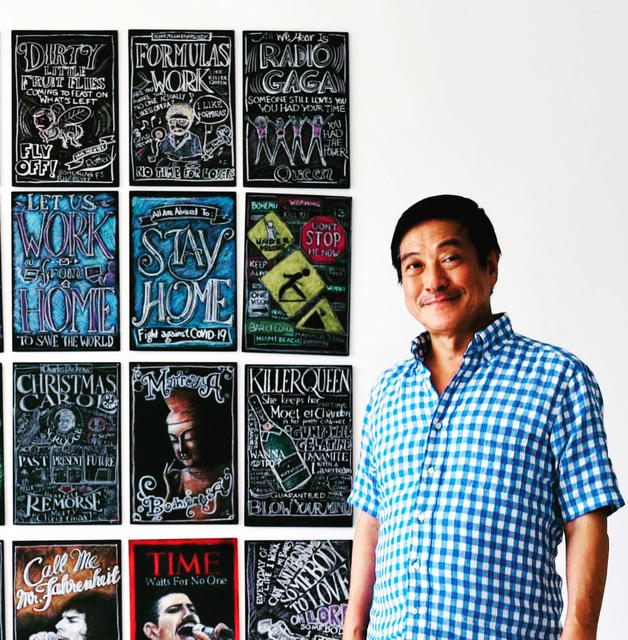Requested by a Japanese corporation in Singapore, I have been making a research on advertising media trends by country in Asia. I have completed the reporting of the Singapore part already. After combining various data, statistics and researches from various sources, I found the PowerPoint presentation got over 130 pages for only the Singapore section.
The client was very happy with the report, saying such a comprehensive information covering all the range of advertising trends, newspaper, magazine, TV, radio, OOH, and digital advertising. This has been resulted from the full use of networks and all kinds of usable information sources.
This report even covers the costing of one full-page full-color ad on the newspaper, Straits Times, for example, a TV spot price of Channel NewsAsia, buss advertising, taxi advertising, etc.
There was one thing that I found while I was making this report. That is, even though the digital advertising is growing in the advertising industry, this does not mean that digital advertising is almighty. The traditional advertising media must have a value that cannot be achieved by digital advertising and so it is not good to discard traditional advertising simply because they are outdated.
I have been in the advertising industry for a couple of decades, witnessing the constant growth of digital advertising. Traditional advertising has become old fashioned. Most emerging agencies were focusing on digital businesses and the digital experts looked like they represent the entire advertising industry. I felt that those people who were doing traditional advertising are becoming obsolete as time goes by.
Digital advertising can clearly focus on the target audience precisely, the results can be easily predicted, the efficiency can be calculated scientifically. The budget can be utilized without lots of wastage and the cost performance is very good. Unlimited number of benefits! This is why both clients and agency people get attracted to digital advertising.
According to the worldwide ad industry data in 2019 by Dentsu Aegis Group, the average percentage of digital advertising in the whole advertising expenses in Asia Pacific is 45.9%. China has the highest percentage in the region, which is 59.8%, followed by Australia: 50.5%; New Zealand: 45.4%; Hong Kong: 41.2%; Taiwan: 39.8%; South Korea: 39.3%; Japan: 34.9%. It is 28.4% in Singapore and other countries in the region has more shares on traditional advertising. The USA has 34% and the UK has 61.3%.
Newspapers and magazines have decreased their circulations and some magazines stopped their business. Televisions are also suffering from the decrease of audience. Traditional advertising media look like endangered species.
Working in the advertising industry for a long time, I always had a uncomfortable feeling against the trend of digital advertising. Maybe just crying sour grapes, but I had a feeling that digital people could not understand the essence of advertising. I myself was trained in the industry, originally as creative director. Since the agency was small, I had a chance to do everything related to advertising including media planning and production. Thanks to that background, I can now have the bird’s-eye view of the advertising industry.
While doing the research, I thought that there might be someone who had the same kind of doubt against digital advertising and I tried to find any hint of data or comments. Finally I found Nielsen’s research titled “Global Trust in Advertising 2015”. It is a global research by asking which type of adverting media the audience feel the trust most. I was impressed to find the graph that the traditional advertising was more trusted than digital advertising. The trend is more obvious in the Asia Pacific but the more or less the similar results in most of the countries. This trend is common throughout the whole age groups. I was interested to find that millennials trust any type of advertising more than other generations.
Also I found another research data conducted by an organization named MarketingSherpa in the USA in 2017. According to this research, the print ad is the most trusted, followed by TV, radio and OOH. Digital advertising was in the lower rank.
If it is only one research data, the credibility may be low but there are a couple of researches that show the same trends equally, which means that this may be true.
I am now in Singapore, doing advertising business for the Asia Pacific region. The number of professionals who have the know-how of traditional advertising is getting fewer. It needs some knowledge and experience to handle newspaper and TV advertising. Since young advertising people may not be interested in such old media, the traditional media look like fading out eventually.
If the theory of trust as in the research I found is verified and traditional advertising regains its importance, then the professional like me may be revaluated as a scarcity value. The area once discarded may become “blue ocean” some day. I felt so during preparing the report.
If you are interested in more details about the data, please contact the address in the website below:
http://www.wings2fly.co

















